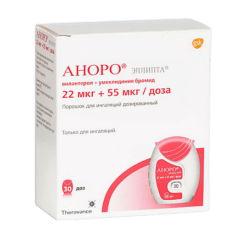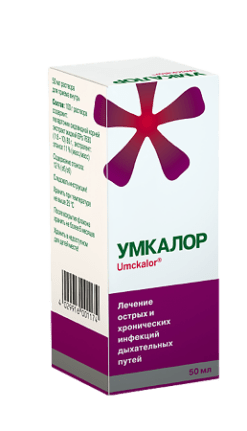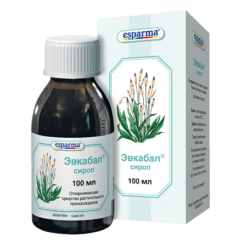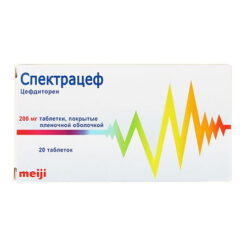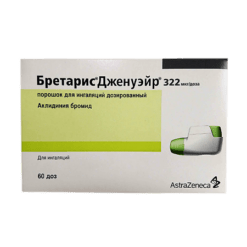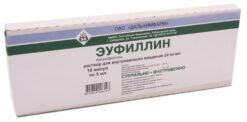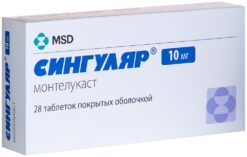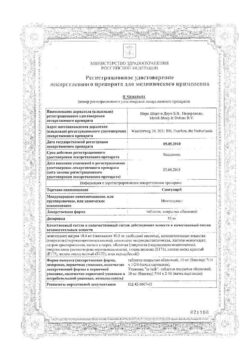No products in the cart.
Rotomox, 400 mg 5 pcs
€1.00
Out of stock
(E-mail when Stock is available)
Description
An antimicrobial agent of the group of fluoroquinolones, acts bactericidally. It is active against a wide range of Gram-positive and Gram-negative microorganisms, anaerobic, acid-resistant and atypical bacteria: Mycoplasma spp., Chlamydia spp., Legionella spp.
Effective against bacterial strains resistant to beta-lactams and macrolides.
Active against most strains of microorganisms: Gram-positive – Staphylococcus aureus (including strains insensitive to methicillin), Streptococcus pneumoniae (including strains resistant to penicillin and macrolides), Streptococcus pyogenes (group A); gram-negative – Haemophilus influenzae (including both beta-lactamase producing and non-producing strains), Haemophilus parainfluenzae, Klebsiella pneumoniae, Moraxella catarrhalis (including both beta-lactamase producing and non-producing strains), Escherichia coli, Enterobacter cloacae; atypical – Chlamydia pneumoniae, Mycoplasma pneumoniae.
Indications
Indications
Infectious and inflammatory diseases caused by microorganisms sensitive to moxifloxacin:
– acute sinusitis;
– exacerbation of chronic bronchitis;
– uncomplicated infections of the skin and subcutaneous structures;
– community-acquired pneumonia, including community-acquired pneumonia, the causative agents of which are strains of microorganisms with multiple antibiotic resistance*;
– complicated infections of the skin and subcutaneous structures (including infected diabetic foot);
– complicated intra-abdominal infections, including polymicrobial infections, including intraperitoneal abscesses;
– uncomplicated inflammatory diseases of the pelvic organs (including salpingitis and endometritis).
* Multidrug-resistant Streptococcus pneumoniae includes strains resistant to penicillin and strains resistant to two or more antibiotics from the following groups: penicillins (with MIC ≥2 μg/ml), second-generation cephalosporins (cefuroxime), macrolides, tetracyclines and trimethoprim/sulfamethoxazole.
Current official guidelines on the use of antibacterial agents must be taken into account.
Pharmacological effect
Pharmacological effect
Pharmacokinetics
Special instructions
Special instructions
In some cases, after the first use of the drug, hypersensitivity and allergic reactions may develop, which should be reported to your doctor immediately. Very rarely, even after the first use of the drug, anaphylactic reactions can progress to life-threatening anaphylactic shock. In these cases, treatment with moxifloxacin should be stopped and the necessary therapeutic measures (including anti-shock) should be started immediately.
QT interval prolongation may occur in some patients when using moxifloxacin. Moxifloxacin should be used with caution in women and elderly patients. Because women have a longer QT interval than men, they may be more sensitive to drugs that prolong the QT interval. Elderly patients are also more susceptible to drugs that affect the QT interval.
Prolongation of the QT interval is associated with an increased risk of ventricular arrhythmias, including polymorphic ventricular tachycardia.
The degree of QT interval prolongation may increase with increasing drug concentrations, so the recommended dose should not be exceeded. However, in patients with pneumonia, no correlation was observed between moxifloxacin plasma concentrations and QT interval prolongation.
There were no cardiovascular complications or deaths associated with QT interval prolongation in patients. When using moxifloxacin, the risk of developing ventricular arrhythmias may increase in patients with conditions predisposing to arrhythmias.
In this regard, moxifloxacin is contraindicated in:
– changes in electrophysiological parameters of the heart, expressed in prolongation of the QT interval: congenital or acquired documented prolongation of the QT interval, electrolyte disturbances, especially uncorrected hypokalemia; clinically significant bradycardia; clinically significant heart failure with reduced left ventricular ejection fraction; a history of rhythm disturbances accompanied by clinical symptoms;
– use with other drugs that prolong the QT interval (see section “Interaction with other drugs”).
Moxifloxacin should be used with caution:
– in patients with potentially proarrhythmic conditions such as acute myocardial ischemia and cardiac arrest;
– in patients with liver cirrhosis (since in this category of patients the risk of developing a prolongation of the QT interval cannot be excluded).
Cases of fulminant hepatitis, potentially leading to liver failure (including fatal cases), have been reported with the use of moxifloxacin (see section “Side effects”). The patient should be informed that if symptoms of liver failure occur, it is necessary to consult a doctor before continuing treatment with moxifloxacin.
Cases of the development of bullous skin lesions such as Stevens-Johnson syndrome or toxic epidermal necrolysis have been reported (see section “Side effects”). The patient should be informed that if symptoms of skin or mucous membrane lesions occur, they should consult a doctor before continuing treatment with moxifloxacin.
The use of quinolone drugs is associated with a possible risk of developing seizures. Moxifloxacin should be used with caution in patients with diseases of the central nervous system and with disorders of the central nervous system that predispose to seizures or lower the threshold for seizure activity.
The use of broad-spectrum antibacterial drugs, including moxifloxacin, is associated with a risk of developing pseudomembranous colitis. This diagnosis should be considered in patients who develop severe diarrhea during treatment with moxifloxacin. In this case, appropriate therapy should be prescribed immediately. Drugs that inhibit intestinal motility are contraindicated in the development of severe diarrhea.
Moxifloxacin should be used with caution in patients with myasthenia gravis due to possible exacerbation of the disease.
During therapy with quinolones, including moxifloxacin, tendonitis and tendon rupture may develop, especially in the elderly and patients receiving glucocorticosteroids. Cases have been described that occurred within several months after completion of treatment. At the first symptoms of pain or inflammation at the site of injury, the drug should be stopped and the affected limb should be unloaded.
When using quinolones, photosensitivity reactions are observed. However, during preclinical and clinical studies, as well as with the use of moxifloxacin in practice, no photosensitivity reactions were observed. However, patients receiving moxifloxacin should avoid exposure to direct sunlight and ultraviolet light.
The use of the drug in the form of tablets for oral administration is not recommended in patients with complicated inflammatory diseases of the pelvic organs (for example, associated with tubo-ovarian or pelvic abscesses).
The use of moxifloxacin is not recommended to treat infections caused by methicillin-resistant Staphylococcus aureus (MRSA). In cases of suspected or confirmed infections caused by MRSA, treatment with appropriate antibacterial drugs should be prescribed (see section “Pharmacodynamics”).
The ability of moxifloxacin to inhibit the growth of mycobacteria may cause in vitro interaction between moxifloxacin and the test for Mycobacterium spp., leading to false-negative results when analyzing samples from patients who are being treated with moxifloxacin during this period.
In patients treated with quinolones, including moxifloxacin, cases of sensory or sensorimotor polyneuropathy leading to paresthesia, hypoesthesia, dysesthesia or weakness have been described. Patients treated with moxifloxacin should be warned to seek immediate medical attention before continuing treatment if symptoms of neuropathy, including pain, burning, tingling, numbness or weakness, occur (see section “Side Effects”).
Psychiatric reactions may occur even after the first use of fluoroquinolones, including moxifloxacin. In very rare cases, depression or psychotic reactions progress to the occurrence of suicidal thoughts and behavior with a tendency to self-harm, including suicide attempts (see section “Side effects”). If patients develop such reactions, moxifloxacin should be discontinued and the necessary measures taken. Caution should be exercised when using moxifloxacin in patients with psychosis and/or a history of psychiatric illness.
Due to the widespread and increasing incidence of infections caused by fluoroquinolone-resistant Neisseria gonorrhoeae, patients with pelvic inflammatory disease should not be treated with moxifloxacin monotherapy unless the presence of fluoroquinolone-resistant N. gonorrhoeae has been excluded. If the presence of fluoroquinolone-resistant N. gonorrhoeae cannot be excluded, consideration should be given to supplementing empiric moxifloxacin therapy with an appropriate antibiotic that is active against N. gonorrhoeae (eg, a cephalosporin).
Dysglycemia
As with other fluoroquinolones, changes in blood glucose concentrations, including hypo- and hyperglycemia, were observed with the use of moxifloxacin. During therapy with moxifloxacin, dysglycemia occurred predominantly in elderly patients with diabetes mellitus receiving concomitant therapy with oral hypoglycemic drugs (for example, sulfonylureas) or insulin. When conducting treatment in patients with diabetes mellitus, careful monitoring of blood glucose concentrations is recommended (see section “Side Effects”).
Impact on the ability to drive vehicles and machinery
Fluoroquinolones, including moxifloxacin, may impair the ability of patients to drive a car and engage in other potentially hazardous activities that require increased attention and speed of psychomotor reactions due to their effects on the central nervous system and visual impairment.
Active ingredient
Active ingredient
Moxifloxacin
Composition
Composition
1 tablet contains:
Active ingredient:
Moxifloxacin hydrochloride 436.800 mg, equivalent to moxifloxacin 400.000 mg.
Excipients:
Corn starch 159.885 mg; microcrystalline cellulose 102 55,000 mg; sodium starch glycolate 24,000 mg; hypromellose 14,300 mg; magnesium stearate 14,000 mg; talc 7,000 mg; colloidal silicon dioxide 4,000 mg; sodium methyl parahydroxybenzoate (E219) 0.015 mg.
Shell composition:
Film shell WT-19022P pink 15,000 mg (polyvinyl alcohol 49,000%; titanium dioxide (E171) 21,790%; polyethylene glycol 6000 13,200%; talc 12,600%; soy lecithin 3,400%; red iron oxide dye (E172) 0.010%).
Pregnancy
Pregnancy
The safety of moxifloxacin during pregnancy has not been established and its use is contraindicated. Cases of reversible joint damage have been described in children receiving some quinolones, but this effect has not been reported in the fetus (when used by the mother during pregnancy).
Reproductive toxicity has been shown in animal studies. The potential risk to humans is unknown.
Like other quinolones, moxifloxacin causes cartilage damage in large joints in premature animals. Preclinical studies have shown that small amounts of moxifloxacin are excreted into breast milk. There are no data on its use in women during lactation. Therefore, the use of moxifloxacin during breastfeeding is contraindicated.
Contraindications
Contraindications
– Hypersensitivity to moxifloxacin, other quinolones or any other component of the drug;
– Age up to 18 years;
– Pregnancy and breastfeeding;
– A history of tendon pathology that developed as a result of treatment with quinolone antibiotics;
– In preclinical and clinical studies, after the administration of moxifloxacin, changes in electrophysiological parameters of the heart were observed, expressed in prolongation of the QT interval. In this regard, the use of moxifloxacin is contraindicated in patients of the following categories: congenital or acquired documented prolongation of the QT interval, electrolyte disturbances, especially uncorrected hypokalemia; clinically significant bradycardia; clinically significant heart failure with reduced left ventricular ejection fraction; a history of rhythm disturbances accompanied by clinical symptoms;
– Moxifloxacin should not be used with other drugs that prolong the QT interval;
– Due to limited clinical data, the use of moxifloxacin is contraindicated in patients with impaired liver function (Child-Pugh class C) and in patients with transaminase elevations more than five times the upper limit of normal;
– Hypersensitivity to soy or peanuts.
With caution
– For diseases of the central nervous system (including those suspected of involving the central nervous system), predisposing to the occurrence of seizures and reducing the threshold of seizure activity;
– In patients with psychosis and/or a history of psychiatric illness;
– In patients with potentially proarrhythmic conditions (especially women and elderly patients), such as acute myocardial ischemia and cardiac arrest;
– For myasthenia gravis;
– In patients with liver cirrhosis;
– When taken simultaneously with drugs that reduce potassium levels;
– In patients with a genetic predisposition or actual presence of glucose-6‑phosphate dehydrogenase deficiency.
Side Effects
Side Effects
Infectious diseases: often – fungal superinfections.
From the hematopoietic system: uncommon – anemia, leukopenia, neutropenia, thrombocytopenia, thrombocythemia, prolongation of prothrombin time/increased INR; rarely – changes in thromboplastin concentration; very rarely – increased prothrombin concentration/decreased INR.
From the immune system: uncommon – allergic reactions, urticaria, itching, rash, eosinophilia; rarely – anaphylactic/anaphylactoid reactions, angioedema, including laryngeal edema (potentially life-threatening); very rarely – anaphylactic/anaphylactoid shock (including potentially life-threatening).
From the side of metabolism: infrequently – hyperlipidemia; rarely – hyperglycemia, hyperuricemia; very rarely – hypoglycemia.
From the mental side: infrequently – anxiety, psychomotor hyperreactivity, agitation; rarely – emotional lability, depression, hallucinations; very rarely – depersonalization, psychotic reactions (potentially manifested in behavior with a tendency to self-harm, such as suicidal thoughts or suicide attempts).
From the nervous system: often – dizziness, headache; uncommon – paresthesia, dysesthesia, taste disturbances (including in very rare cases ageusia), confusion, disorientation, sleep disturbances, tremor, vertigo, drowsiness; rarely – hypoesthesia, impaired sense of smell (including anosmia), atypical dreams, impaired coordination (including gait disturbances due to dizziness or vertigo, in very rare cases leading to injury due to a fall, especially in elderly patients), convulsions with various clinical manifestations (including “grand mal” seizures), attention disorders, speech disorders, amnesia, peripheral neuropathy, polyneuropathy; very rarely – hyperesthesia.
On the part of the organ of vision: infrequently – visual impairment (especially with reactions from the central nervous system); very rarely – transient loss of vision (especially with reactions from the central nervous system).
On the part of the hearing organ: rarely – tinnitus, hearing impairment, including deafness (usually reversible).
From the cardiovascular system: often – prolongation of the QT interval in patients with concomitant hypokalemia; uncommon – prolongation of the QT interval, palpitations, tachycardia, vasodilation; rarely – increased blood pressure, decreased blood pressure, fainting, ventricular tachyarrhythmias; very rarely – nonspecific arrhythmias, polymorphic ventricular tachycardia (pirouette type), cardiac arrest (mainly in persons with conditions predisposing to arrhythmias, such as clinically significant bradycardia, acute myocardial ischemia).
From the respiratory system: infrequently – shortness of breath, asthmatic condition.
From the digestive system: often – nausea, vomiting, abdominal pain, diarrhea; uncommon – decreased appetite and reduced food consumption, constipation, dyspepsia, flatulence, gastroenteritis (except erosive gastroenteritis), increased amylase activity; rarely – dysphagia, stomatitis, pseudomembranous colitis (in very rare cases associated with life-threatening complications).
From the liver and biliary tract: often – increased activity of liver transaminases; uncommon – liver dysfunction (including increased LDH activity), increased bilirubin concentration, increased GGT and alkaline phosphatase activity; rarely – jaundice, hepatitis (mainly cholestatic); very rarely – fulminant hepatitis, potentially leading to life-threatening liver failure (including fatal cases).
From the skin and subcutaneous tissues: very rarely – bullous skin reactions, for example, Stevens-Johnson syndrome or toxic epidermal necrolysis (potentially life-threatening).
From the musculoskeletal system: infrequently – arthralgia, myalgia; rarely – tendinitis, increased muscle tone and cramps, muscle weakness; very rarely – arthritis, tendon ruptures, gait disturbance due to damage to the musculoskeletal system, increased symptoms of myasthenia gravis.
From the urinary system: infrequently – dehydration (caused by diarrhea or decreased fluid intake); rarely – impaired renal function, renal failure as a result of dehydration, which can lead to kidney damage, especially in elderly patients with pre-existing impaired renal function.
Local reactions: often – reactions at the injection/infusion site.
General reactions: infrequently – general malaise, nonspecific pain, sweating.
The incidence of the following adverse reactions was higher in the group receiving stepwise therapy: often – increased GGT activity; uncommon – ventricular tachyarrhythmias, arterial hypotension, edema, pseudomembranous colitis (in very rare cases associated with life-threatening complications), convulsions with various clinical manifestations (including “grand mal” seizures), hallucinations, renal dysfunction, renal failure (as a result of dehydration, which can lead to kidney damage, especially in elderly patients with pre-existing renal impairment).
Interaction
Interaction
When used together with atenolol, ranitidine, calcium-containing supplements, theophylline, cyclosporine, oral contraceptives, glibenclamide, itraconazole, digoxin, morphine, probenecid (no clinically significant interaction with moxifloxacin has been confirmed), no dose adjustment is required.
Drugs that prolong the OT interval
The possible additive QT interval prolonging effect of moxifloxacin and other drugs that affect QT prolongation should be considered. Due to the combined use of moxifloxacin and drugs that prolong the QT interval, the risk of developing ventricular arrhythmia, including polymorphic ventricular tachycardia (torsade de pointes), increases.
The combined use of moxifloxacin with the following drugs that affect the prolongation of the QT interval is contraindicated:
– class IA antiarrhythmic drugs (quinidine, hydroquinidine, disopyramide, etc.);
– class III antiarrhythmic drugs (amiodarone, sotalol, dofetilide, ibutilide, etc.);
– neuroleptics (phenothiazine, pimozide, sertindole, haloperidol, sultopride, etc.);
– tricyclic antidepressants;
– antimicrobial drugs (sparfloxacin, erythromycin (intravenously), pentamidine, antimalarials, especially halofantrine);
– antihistamines (terfenadine, astemizole, mizolastine);
– others (cisapride, vincamine (intravenous), bepridil, difemanil).
Antacids, multivitamins and minerals
Taking moxifloxacin simultaneously with antacids, multivitamins and minerals may lead to impaired absorption of moxifloxacin due to the formation of chelate complexes with multivalent cations contained in these drugs. As a result, the plasma concentration of moxifloxacin may be significantly lower than desired. Therefore, antacids, antiretroviral drugs (eg, didanosine) and other drugs containing magnesium or aluminum, sucralfate and other drugs containing iron or zinc should be taken at least 4 hours before or 4 hours after oral moxifloxacin.
Warfarin
When combined with warfarin, prothrombin time and other blood coagulation parameters do not change.
Change in INR value
In patients receiving anticoagulants in combination with antibiotics, including moxifloxacin, there have been cases of increased anticoagulant activity of anticoagulants. Risk factors are the presence of an infectious disease (and concomitant inflammatory process), age and general condition of the patient. Despite the fact that no interaction has been identified between moxifloxacin and warfarin, in patients receiving concomitant treatment with these drugs, it is necessary to monitor the INR and, if necessary, adjust the dose of indirect anticoagulants.
Digoxin
Moxifloxacin and digoxin do not have a significant effect on each other’s pharmacokinetic parameters. With repeated doses of moxifloxacin, the maximum concentration of digoxin increased by approximately 30%, while the area under the concentration-time curve (AUC) and the minimum concentration of digoxin did not change.
Activated carbon
With the simultaneous use of activated carbon and moxifloxacin orally at a dose of 400 mg, the systemic bioavailability of the drug is reduced by more than 80% as a result of inhibition of its absorption. In case of overdose, the use of activated carbon at an early stage of absorption prevents a further increase in systemic exposure.
Overdose
Overdose
There are limited data on overdose with moxifloxacin. No side effects were observed when using moxifloxacin at a dose of up to 1200 mg once and 600 mg for 10 days or more. In case of overdose, one should focus on the clinical picture and carry out symptomatic maintenance therapy with ECG monitoring. The use of activated charcoal immediately after oral administration of the drug may help prevent excessive systemic exposure to moxifloxacin in cases of overdose.
Storage conditions
Storage conditions
Store at a temperature not exceeding 25 °C.
Keep out of the reach of children.
Shelf life
Shelf life
3 years.
Do not use after expiration date.
Manufacturer
Manufacturer
Rozlex Pharm, Russia
Additional information
| Manufacturer | Belco Pharma, India |
|---|---|
| Medication form | pills |
| Brand | Belco Pharma |
Related products
Buy Rotomox, 400 mg 5 pcs with delivery to USA, UK, Europe and over 120 other countries.



